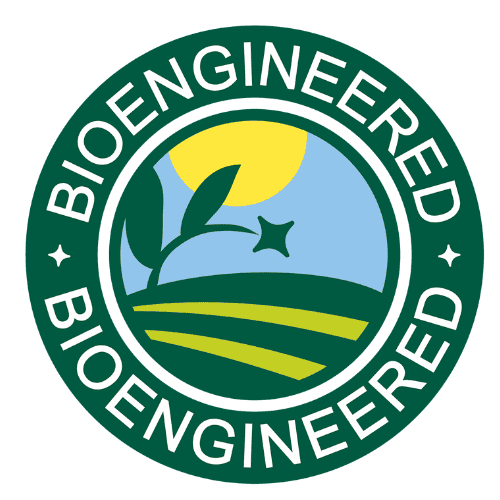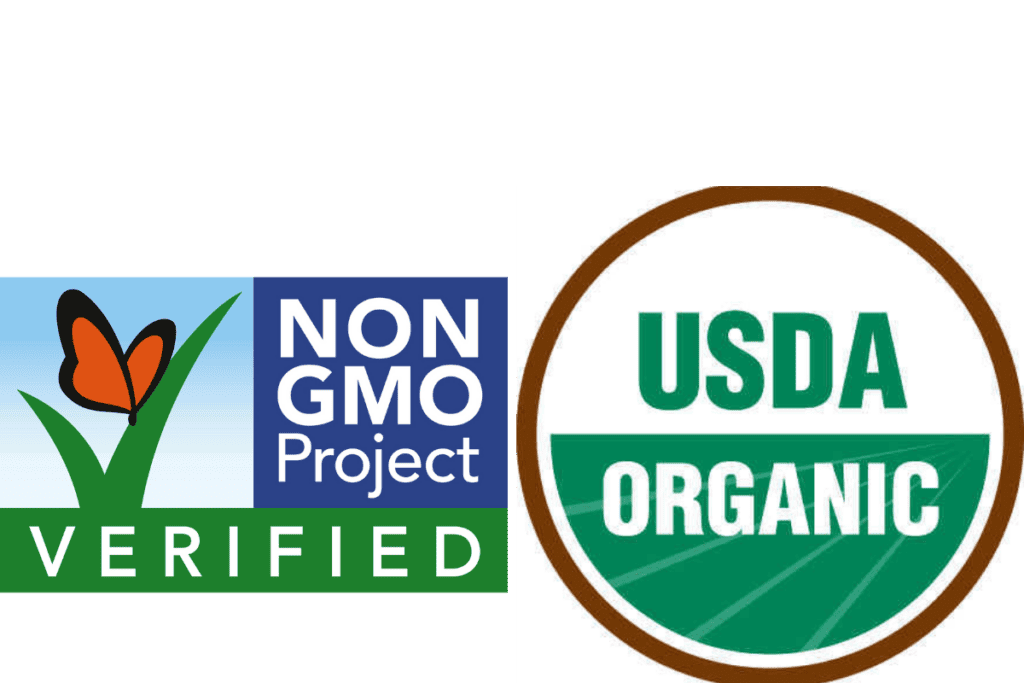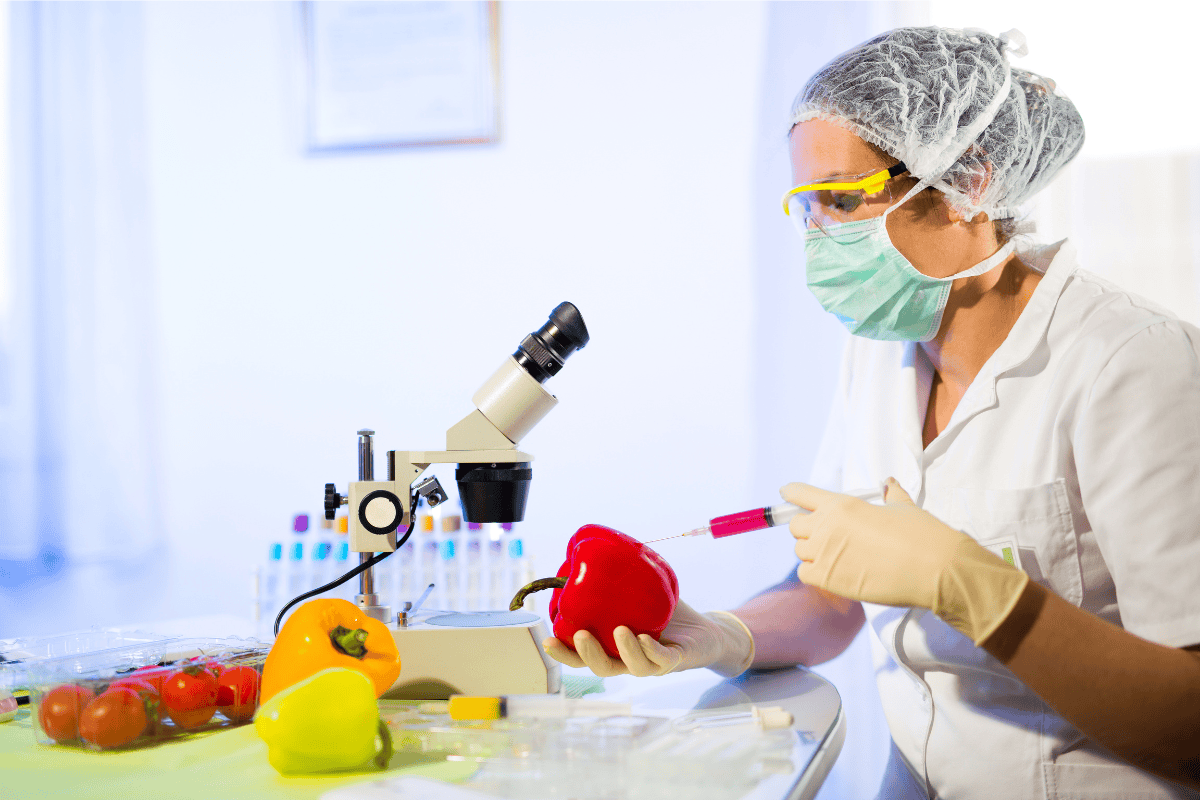What Are Bioengineered Foods?
When it comes to bioengineered food safety, many consumers are unsure about the potential risks and benefits. Bioengineered foods, also known as BE foods, might sound like something out of a sci-fi movie, but they’re pretty common in our food supply today. Simply put, bioengineered foods are foods that have had their DNA altered in a lab to achieve specific traits. This can include making crops resistant to pests, enhancing their nutritional content, or even making them last longer on the shelf.
How Are Bioengineered Foods Different from GMOs?
You might have heard the term GMO (Genetically Modified Organism) thrown around a lot and wondered how it’s different from bioengineered foods. Well, all bioengineered foods are GMOs, but not all GMOs are considered bioengineered. The key difference lies in how they are defined and identified. Bioengineered foods have detectable genetic material modified through specific techniques like in vitro recombinant DNA technology.
This technique allows scientists to pinpoint and modify genes in our food’s DNA in order to introduce specific traits into the food. The presence of modified DNA in these foods is detectable, which differentiates them from other GMOs where the modification may not be apparent in the final product.This means that scientists take a precise approach to insert or modify genes, resulting in specific traits that you can detect in the food itself.
In contrast, some GMOs may not have detectable modified DNA by the time they reach your plate, either because the modifications don’t impact the edible part of the plant, or because the changes aren’t detectable with current testing methods. So, if you’re looking at a food label and you see the term “bioengineered,” you’re dealing with a very particular kind of GMO, one with clearly defined genetic changes that meet specific regulatory criteria.
Why Are Bioengineered Foods Created?
Now, you might be asking, “Why mess with the DNA of my food at all?” The answer often boils down to making food production more efficient and sustainable. For example, some crops are bioengineered to resist pests. Other bioengineered crops are designed to tolerate drought, which can alleviate crop loss from extreme weather patterns and water shortages.
Some bioengineered foods are made to be more nutritious. Foods are modified to contain more vitamins, to combat nutrient deficiencies in parts of the world where certain nutrients are lacking in the local diet. The intention behind bioengineered food is often to solve real-world problems like food security, environmental sustainability, and nutrition.
Impact on Food Quality
The modification of DNA in bioengineered foods is designed to improve food’s resistance to the difficulties of supply chain in our relatively new globalized food supply. For example, modifying a tomato’s DNA to resist bruising or rot can help it stay fresher for longer, allowing it to be shipped further distances with less risk of damage or waste. The flavor, texture, or color of the food is altered to make it more appealing to consumers.
The Debate Over Bioengineered Foods: Key Issues
Safety Concerns
Bioengineered food has been around for a long time but the technology is still relatively new and there are a lot of unknowns. Many concerns center around potential long-term health effects. It is possible that altering the genetic makeup of food could lead to unintended consequences, such as allergies or resistance to antibiotics. We will dive deeper into these issues later in the post to explore these concerns more thoroughly.
Environmental and Ethical Concerns
Bioengineered crops are often designed to be more resistant to pests and herbicides, which can lead to increased herbicide use and the potential for environmental harm. These crops can also impact biodiversity, as bioengineered crops could cross-breed with wild plants, potentially leading to unintended consequences in ecosystems. Additionally, the ethics of altering the genetic makeup of food is a significant issue for many consumers, who feel that food should remain as natural as possible.
Impact on Small Farmers and Food Sovereignty
Bioengineered food has a significant impact on small farmers and food sovereignty. Large biotech companies often hold patents on bioengineered seeds, which can lead to legal and financial challenges for farmers. This dynamic can reduce the control that small farmers have over their crops, leading to consolidation of power within the food industry and the loss of traditional farming practices.
The High Stakes of Bioengineered Food: Corporate Investments and the Drive for ROI
The investment in bioengineered foods is substantial, particularly from large food corporations like Kraft and Nabisco. These companies, along with others in the food industry, are pouring millions of dollars into bioengineering technology to improve their food products in various ways. For example, bioengineering can extend shelf life, enhance nutritional content, or create more sustainable food sources. However, these investments are not just for health or sustainability; they are also driven by a need for a return on investment, which can sometimes lead to prioritizing profit over the potential long-term impacts on health and the environment.
For example, Kraft Heinz, Nestlé and Nabisco have reportedly invested in innovations to develop bioengineered ingredients that appeal to consumer preferences. These large-scale investments are made to optimize food production, but also to maintain a competitive edge and grow profitability.
While bioengineering can offer benefits like extended shelf life and enhanced nutritional profiles, it’s important to be mindful that these advancements are often aligned with corporate goals, potentially prioritizing marketability and sales over consumer health.
Kraft Heinz has made significant investments in bioengineered food technology, including launching a $100 million venture capital fund called Evolv Ventures, focused on food technology startups. This fund aims to invest in areas like supply chain innovation and direct-to-consumer food models. This substantial investment is part of their broader strategy to leverage emerging technologies and maintain a competitive edge in the food industry.
Are Bioengineered Foods Safe to Eat?
Safety is usually the biggest concern people have when it comes to bioengineered foods. Before these foods hit the market, they undergo rigorous testing by regulatory bodies like the FDA, USDA, and EPA in the United States. These tests check for potential allergens, toxins, and nutritional equivalence to ensure that bioengineered foods are just as safe than their non-modified counterparts. So far, scientific consensus from numerous studies suggests that bioengineered foods are safe to eat and nutritionally similar to traditionally grown foods.
However, long-term health effects of these foods for consumers are still being researched.
Potential Health Risks and Allergies
One of the primary concerns surrounding bioengineered foods is the potential for unforeseen health risks, including the introduction of new allergens or the alteration of existing allergenic properties in foods. Critics argue that modifying the DNA of foods could create proteins that haven’t been present in the food supply before, potentially triggering allergic reactions or other health issues in sensitive individuals. Although bioengineered foods undergo safety testing, some believe that the long-term health impacts are not yet fully understood.
Unseen Risks of Added Nutrients in Bioengineered Foods
When nutrients are added to bioengineered foods without proper disclosure, it can present significant risks, particularly for individuals on medication. Some added nutrients may cause reactions or interact with medications in unexpected ways. Moreover, excess intake of certain nutrients, especially fat-soluble vitamins like A, D, E, and K, can build up in the body and lead to adverse effects. People often plan their diets around whole foods, carefully choosing them to meet their specific nutritional needs. Altering the DNA of foods to increase or change their nutrient content can disrupt this balance, leaving consumers unsure of what they’re truly consuming. Full transparency is essential to ensure people can make informed dietary choices that align with their health needs.
Real-World Example of Risks of Supplementing Nutrients in Food
Golden Rice has been developed to address nutritional deficiencies, such as providing beta-carotene (a precursor to vitamin A) to combat vitamin A.
Beta-carotene, can have interactions with medications and certain comorbidities, as well as potential risks from overconsumption. Beta-carotene is converted into vitamin A when metabolized by the human body. While beta-carotene is generally a safer additive than preformed vitamin A because the body converts it to vitamin A as needed, excessive intake can still lead to complications.
1. Medication Interactions:
Statins (cholesterol-lowering drugs): Beta-carotene supplements, especially in combination with other antioxidants like vitamin E, can reduce the effectiveness of statins like Simvastatin (Zocor) and Niacin in raising “good” HDL cholesterol.
Retinoid medications (e.g., Accutane, Soriatane): These medications are derived from vitamin A, and combining them with excessive beta-carotene can lead to an increased risk of vitamin A toxicity, causing side effects like dry skin, liver damage, and headaches.
2. Comorbidities:
Smokers: High doses of beta-carotene supplements have been linked to an increased risk of lung cancer in smokers and individuals exposed to asbestos. This risk was particularly noted in studies where smokers were given large doses of beta-carotene, which contradicted its usual antioxidant benefits.
Liver Disease: Similar to preformed vitamin A, excessive beta-carotene intake in individuals with compromised liver function can lead to an increased risk of toxicity as the liver converts beta-carotene into vitamin A.
Diabetes: People with diabetes may metabolize beta-carotene differently, potentially affecting blood sugar control. High doses of beta-carotene could also interfere with glucose metabolism in some cases.
3. Overconsumption:
While beta-carotene is water-soluble and generally considered safe in high amounts compared to preformed vitamin A, excessive intake can still cause health issues. One common result of overconsumption is carotenemia, a condition where the skin turns yellow-orange due to excessive beta-carotene in the bloodstream. Although not harmful, it can be a cosmetic concern.
However, in high amounts, beta-carotene can lead to adverse effects. The body will store excess beta-carotene in the skin and fat tissues, which can cause discoloration and put strain on the liver over time.
Political and Economic Influences on Food and Substance Approvals
The approval of certain foods and substances is often influenced by political and economic factors, where profitability can take precedence over thorough research. Regulatory agencies sometimes face pressure from powerful industries to approve products quickly, even when long-term health effects aren’t fully understood. Companies seek swift approval to maximize profits, and political lobbying can expedite the process. This can lead to the approval of products that later prove harmful, as the focus on immediate gains overshadows comprehensive safety testing. The result is a system where consumer safety may be compromised in favor of financial interests.
Lessons from the Past: Risks in Food Technology
Food technology has long aimed to improve the food supply by changing or adding substances that resist pests or enhance nutritional content to reduce waste and increase sustainability. Regulatory agencies (FDA, USDA, and EPA) have often approved these practices, only to later learn, after long-term studies had time to be conducted, that the practices posed serious health risks.
Here are six examples of such cases:
Trans Fats (Partially Hydrogenated Oils):
- Approved by: FDA
- Issue: Trans fats were widely used in processed foods for decades due to their stability and shelf life benefits. However, they were later linked to increased risk of heart disease, stroke, and diabetes. In 2015, the FDA declared trans fats unsafe and began phasing them out.
DDT (Dichlorodiphenyltrichloroethane):
- Approved by: USDA and EPA
- Issue: This pesticide was used extensively in agriculture to control insects. It was later discovered to be highly toxic to wildlife, particularly birds, and was linked to cancer in humans. DDT was banned in the U.S. in 1972.
Fen-Phen (Fenfluramine and Phentermine):
- Approved by: FDA
- Issue: Fen-Phen was a popular weight-loss drug combination in the 1990s. However, it was later found to cause serious heart valve problems and pulmonary hypertension, leading to its withdrawal from the market in 1997.
DES (Diethylstilbestrol):
- Approved by: FDA
- Issue: DES was prescribed to pregnant women from the 1940s to the 1970s to prevent miscarriages. Decades later, it was discovered to cause reproductive issues and cancer in the children of women who took the drug, leading to its ban in 1971.
Fluoride in Water Supply:
- Approved by: EPA
- Issue: Fluoride was added to water supplies beginning in the 1940s to prevent tooth decay. While fluoride has been effective in reducing cavities, concerns have arisen over long-term health risks, including dental fluorosis and potential links to bone and neurological issues. Recent studies have suggested that overexposure to fluoride, particularly in young children, may have harmful effects.
Alar (Daminozide):
- Approved by: EPA and USDA
- Issue: Alar was a chemical sprayed on apples to regulate their growth and improve appearance. In the 1980s, it was found to be a potential carcinogen, particularly dangerous to children, leading to its removal from the market in 1989.
The Evolution of Bioengineered Food Safety Regulations in the U.S.
Government agencies play a key role in ensuring bioengineered food safety, but how much do we really know about the regulations?
In the U.S., bioengineered food regulations are primarily governed by the National Bioengineered Food Disclosure Standard, which was established by the USDA in response to legislation passed in 2016. The standard requires clear labeling for foods that are or may be bioengineered, meaning that these foods contain detectable modified DNA. As of January 2022, companies are required to disclose this information using specific labels, which often include a “bioengineered” or “derived from bioengineering” symbol.
However, the regulations still allow for a lot of ambiguity for consumers. While food manufacturers must disclose the presence of bioengineered ingredients, they are not necessarily required to list specific additives or explain the purpose of genetic modification (e.g., increasing shelf life, pest resistance, etc.). Additionally, some bioengineered foods may still fall under thresholds that exempt them from labeling if the bioengineered content is low.

Transparency and Recent Changes in Labeling Laws
One of the more recent developments around bioengineered foods is the push for greater transparency. Starting in January 2022, the United States implemented new labeling laws that require foods with bioengineered ingredients to be clearly marked. You might have noticed the “Bioengineered” label or a small BE symbol on some of your groceries. This change was made to help consumers make more informed choices about the foods they eat. If you’re someone who likes to know exactly what’s in your food, these labels are a great tool for navigating the supermarket aisles with confidence.
Transparency is crucial, especially when it comes to something as personal as food. These new regulations are a step forward in ensuring that you have all the information you need right at your fingertips. However, not all the information you may want is readily available. Additionally, navigating these labels can still be a bit confusing. Make sure to dig a little deeper or ask questions if something isn’t clear. The more informed you are, the better choices you can make for your health and wellness.
Transparency and Consumer Choice
Despite new labeling laws requiring bioengineered foods to be clearly marked, some consumers feel that transparency is still lacking. Certain foods, despite being bioengineered, are exempt from disclosure if the bioengineered ingredients are considered too minute. Additionally, while labeling bioengineered foods is required, there is no mandate to disclose the specific additives or the intent behind the genetic modifications. May consumers worry that not all foods are adequately labeled, making it difficult to make informed choices about what they are eating. The introduction of bioengineered foods into the market has also sparked debate over consumer rights, as many people prefer to have complete control over the foods they consume, including avoiding genetically modified or bioengineered ingredients.
Consumer Responsibility
When people take supplements or medications, they’re usually aware of the need to check for interactions with other products they’re using or consider any health conditions they may have. These products come with clear dosing guidelines and often encourage individuals to consult with a doctor or qualified healthcare professional before starting them. This precaution helps ensure that they’re taking the right amount and understanding potential side effects.
However, when beta-carotene or other nutrients are added to bioengineered foods like Golden Rice, many people may not think about stopping to assess the risks. They might not consider how these additives could interact with supplements or medications they’re already taking, or how the added nutrient might affect their current health status. Unlike labeled supplements with dosing instructions, the amount of beta-carotene in bioengineered foods might not be as clearly communicated, leading to unintentional overconsumption.
While transparency in labeling is paramount for safety, it’s equally important that the potential risks and benefits are explained clearly. Consumers need to understand how the added nutrients in bioengineered foods can impact their health, especially if they are managing chronic conditions or taking other medications. Ensuring this information is readily available and easy to understand is key to making bioengineered foods safe and beneficial for everyone.
Navigating Bioengineered Foods
| Bioengineered Foods | Whole Foods | |
|---|---|---|
| Nutritional Content | It can be enhanced (e.g., added vitamins or nutrients). | High in natural nutrients, vitamins, and minerals without modifications. |
| Safety | Tested for safety; considered safe by major health organizations. | Naturally safe, with a long history of human consumption. |
| Presence of Additives | Has modified DNA but usually without added chemicals or preservatives. | Free from modified DNA, preservatives, and additives. |
| Taste and Texture | Typically similar to non-modified counterparts unless chosen to modify. | Authentic, natural taste and texture. |
| Environmental Impact | Unknown impact on biodiversity. | Supports sustainable, organic farming practices; minimal impact when locally sourced. |
| Labeling and Transparency | New labeling laws require easy to identify disclosure of BE product but specifics are not included. Also, some information may be hard to understand. | Clearly labeled as organic or non-GMO; easy to identify and understand. |
| Long-Term Health Impact | Long-term effects are still a topic of study; treated as safe. | Proven health benefits with a clear history of consumption; supports natural bodily functions. |
| Cost | Often less expensive due to higher yields and longer shelf life. | Can be more expensive, especially for organic and locally sourced options. |
| Sustainability | Promotes crop resilience and can be more sustainable in harsh climates. | Supports biodiversity and soil health; aligns with eco-friendly and local sourcing values. |
| Control Over Ingredients | Less control over the genetic makeup of foods. | Full control over what you consume; aligns with a clean, whole-food diet. |
Maintaining a Health-Conscious Diet
For those committed to a health-conscious lifestyle, the idea of bioengineered foods can be a bit of a dilemma. On one hand, they offer potential benefits like enhanced nutrition and sustainability. On the other, the concept of eating foods with modified DNA has a lot of unknowns. Although it is deemed safe now, long term health effects of these foods are still being researched. The food you consume is a personal choice and you need to determine what is best for you at an individual level.
Why Personal Choice in Food Matters
I like to believe that leaders in government and the food industry have good intentions, but when it comes to what goes into my family’s bodies, personal choice is critical. Leaders in this field can sometimes become too focused on the big picture and overlook the percentage of individuals who may have adverse effects. These unintended consequences often go unnoticed or are deemed insignificant weighed against the “real world problems” their technology could improve. However, there is a long history of technological innovations being found to have caused harm once the long-term research has had time to be completed.
This isn’t about placing blame but emphasizing the importance of taking control of your food choices. It’s crucial to read, research, and determine what’s best for you and your family based on your individual needs.
I am concerned about bioengineered ingredients, and try to eat natural options. I actively look for labels like “Non-GMO” or “Organic” when I am shopping as these foods are typically not bioengineered.

Is Freeze Drying the Answer?
Choosing to eat more natural food products that are not bioengineered can lead to food waste. Organic and non-GMO foods do not have as long of a shelf life. Coupled with the higher costs of natural whole foods, it can be difficult for families to afford to continue choosing this healthy option.
Using tools like a Harvest Right Freeze Dryer allows you to preserve fresh, whole foods without the need for genetic modifications to extend shelf life. You can stock up seasonally or during sales on your favorite fruits, vegetables, and even proteins at a lower cost and preserve the quality and nutritional content of foods you trust. Freeze drying not only gives you control over what’s in your pantry but also aligns with a more natural, less processed way of eating.
The choice of whether you prefer to keep your food unmodified is ultimately yours. The key is to stay informed, be open to learning, and make decisions that feel right for you and your lifestyle. Check out our page about how to get started if you want to see if freeze drying is a good preservation method for your lifestyle.




